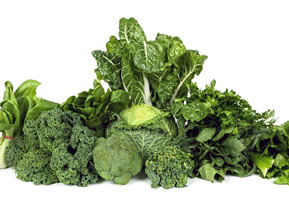Recent News & Events
Food Scientists Introduced Ways to Mask the Bitter Taste in Food
17
 In this year’s Annual Meeting & Food Expo at the Institute of Food Technologists (IFT), a team of food scientists showcased a new presentation that introduced the idea of masking or blocking the bitter taste in food to make it palatable enough for consumers with genetically sensitive palates.
In this year’s Annual Meeting & Food Expo at the Institute of Food Technologists (IFT), a team of food scientists showcased a new presentation that introduced the idea of masking or blocking the bitter taste in food to make it palatable enough for consumers with genetically sensitive palates.
Some of the most common food with bitter tastes featured as examples in the presentation include grapefruit, Brussels sprouts, soy, broccoli, asparagus, kale, spinach, tea, and coffee. Since a lot of factors affect people’s individual eating habits and taste consistently ranked on top, researchers noted that “there’s also a huge variability in how much bitterness people taste, if something is bitter you like it less and you eat it less.”
People with a discriminating palate and high sensitivity to bitter taste tends to eat 25 percent less vegetables. This perception of bitter taste remains complicated considering how the number of bitter receptor genes varies by individual, according to John Hayes, PhD, a Pennsylvania State University’s food science assistant professor and Sensory Evaluation Center director. Hayes also explained that tolerance for bitterness could improve over time with the body’s natural capacity to adjust.
“And yet as consumer preference grows for products with specific nutrients or ingredients, food scientists are working to mask or diminish bitter and other tastes. There’s an increasing market opportunity to attenuate bitterness perception and improve palatability and preference among consumers,” Robert Sobel, FONA International’s vice president for research and innovation stated.
To support Sobel’s statement, the feature presentation also discussed the way food scientists and manufacturers blend in high-intensity sweeteners to typically bitter-tasting energy drinks, and because the human brain is partial to sweetness, the ingredient would help recede the bitter perception of the consumers. Food manufacturers also count on taste solutions like phantom aroma sweeteners in berry, vanilla, citrus, or even bacon and cheese to modify the taste and divert the consumer’s brain from thinking that the food tastes bitter.
Additionally, food manufacturing industries use a carboxylic acid salt found in Columbian coffee called “lactisole” to help mitigate bitterness. Biochemical and pharmaceutical industries also use a substance called allosteric modulator to modify the protein function and structure of food and ingredients that then decreases the salty, bitter, and sweet taste signals to the brain.
Studies on food science and technology such as this work on masking bitter tastes of food for consumer palatability require advanced industrial laboratory equipment to obtain precise and reproducible results that could go long mile in advancing today’s food production techniques.
Discovery Scientific Solutions (DSS) offers a wide variety of top quality industrial laboratory products that meet small to large-scale industrial laboratory research markets.
